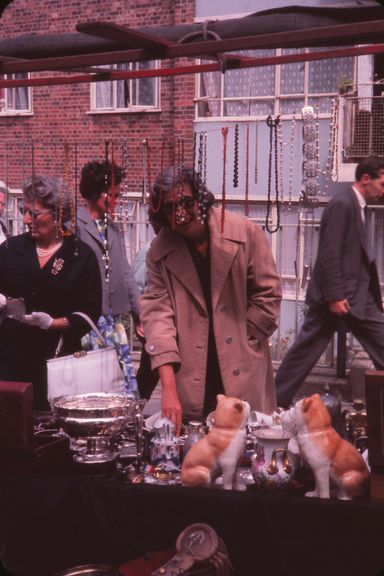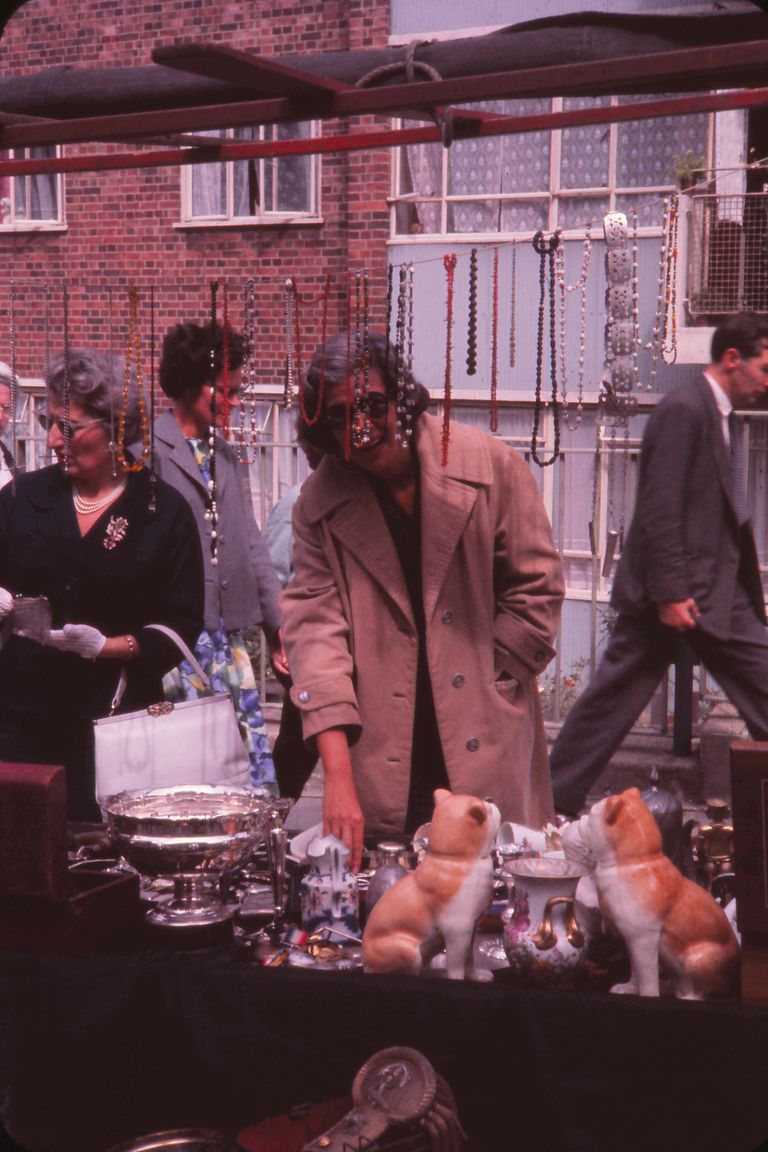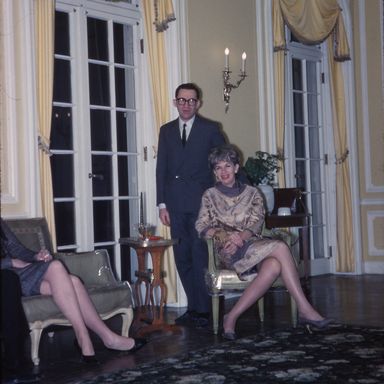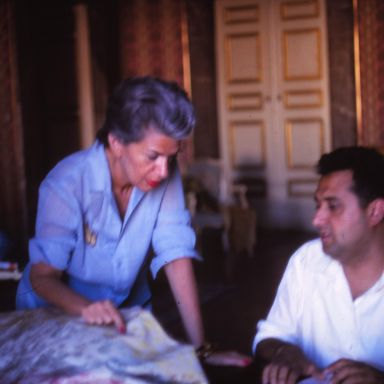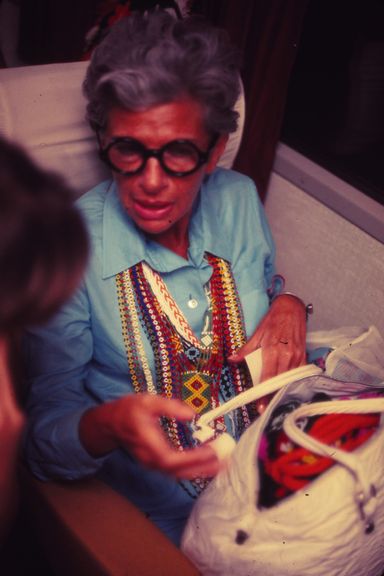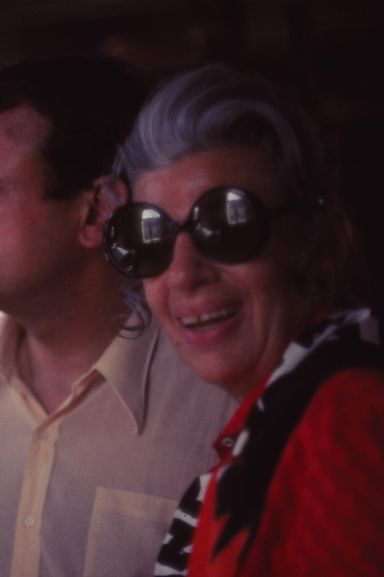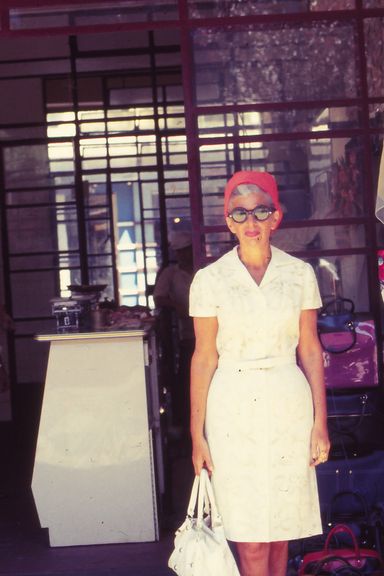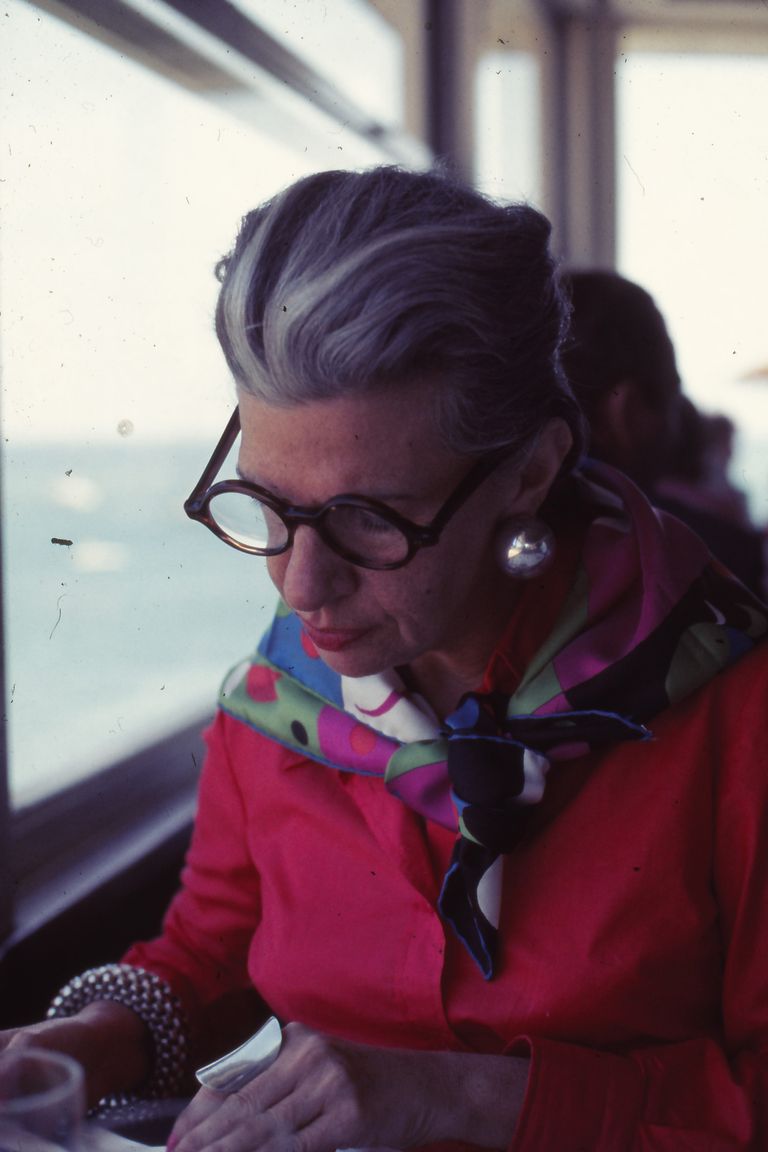Iris Apfel on Individuality, Her New Movie, and Being Famous
There’s a new theme every day on It’s Vintage. Read more articles on today’s topic: The Eccentric.
“I’m so sorry, the phones here don’t stop,” says Iris Apfel, ten minutes into our interview, after putting me on hold to take another phone call. “And if I shut it off I’ll never get it on again because technologically, I live in the 17th century. I don’t do email; I don’t do computers; I don’t do internet; and I had the misfortune, just recently, to have my darling little clam-shell phone that I adored fall into a tub of water.”
For the last several years, Apfel, who is 93, has been fielding constant phone calls, many of them requests — requests to be the subject of a show at the Peabody Essex Museum (which she did in 2009), to design a line of cosmetics for MAC (2011), to give an interview, to come to a party, to collaborate with Eyebobs or HSN. That’s because Apfel, who often wears big, round eyeglasses and layers of necklaces over jazzy jackets, has come to stand for something larger: unencumbered individuality, a sense of adventure in fashion and life, a fearlessness about getting dressed.
A new documentary, Iris, directed by the late Albert Maysles, captures this side of Apfel — the woman who is filled with uplifting advice and pithy one-liners — and who sounds like softly jangling beads when she moves. The camera follows Apfel from glittering fashion-world events to bargaining jags to New York fashion courses she leads for students from the University of Texas. There are also several intimate moments in her chotchke-filled Park Avenue home beside her husband, Carl, who is 101 (and whom Apfel calls “a darling”). Together, they founded the successful textiles company Old World Weavers in the 1950s, and traveled around the world to source their product. (They went on to provide fabrics for the White House during several administrations.)
The Cut spoke to Apfel (by phone from her home in Palm Beach) about how fashion has changed, how individuality takes work, and being treated like she “invented penicillin.”
What did you think of the documentary when you first saw it?
It was a shock because I had nothing to do with any of the putting it together, and I had no idea what to expect because [Albert] Maysles doesn’t work with a script and never indicated what he was going to do. They just took lots and lots of footage — I think there’s enough film left on the cutting-room floor to do three more films — so it came as kind of a shock. I’m very pleased that Albert loved it, as it was his last work. And I’m very gratified at the response we’re getting because I had no idea what to expect; I thought people might just laugh, you know, in not the right way.
Was there anything in particular that surprised you upon seeing it?
I was very worried that since he did shoot me at so many fashion events that I would be perceived as an empty-headed fashionista, which I hope I’m not. I do a lot of other things. I love fashion, I think it’s wonderful, but it’s hardly my life. It’s just a small part of it, and if I can help people by helping them to dress up a little bit and look better and put a little glamour back in their lives, because so many women — I have learned, after these last ten years of having the museum shows and autographing so many books, and they’ve confided so much in me — are so terribly obsessed with the way they look, and they’re just not happy with it. So if I can help them, I’m absolutely delighted.
How, exactly, do you help women you meet regain their confidence?
Well, I don’t know what I do, but they tell me all the time that I’ve given them hope and confidence and inspiration and courage. I would say any number of them have gone as far as to say I changed their lives, which I thought was a bit much. I used to tell my husband, and he said, Well, why don’t you ask? And I said, Well, I can’t ask such personal questions, and I don’t have the time on all of these things.
One day I had the opportunity. It was the big collectibles show down here. When I walked in, you’d think I’d invented penicillin or something. I was encircled by a group, and if I had a ring they would’ve gotten down and kissed my hand. They said they were all vintage purveyors of accessories and told me that I have increased their business like 400 percent. [They said that] everybody comes looking for an “Iris” piece. One woman said, “You changed my life. I’ve never known how to get dressed and I’m never pleased with the way that I look because it’s not me. And I never knew what to do. And I went to your show the other day, and I walked through and I came home and I said, ‘My God, I think I have the answer, it isn’t just me that wants to look a little bit different without looking like a freak.’” So, she said, “Now I’m following what I think you would advise, and I’m so much happier. I experiment. I’m trying to get to know myself. I’m starting to know what I can handle and what I can’t, and it’s not 100 percent, but it’s working. But the best thing is, now that I’ve learned that I don’t have to look like everybody else, I’ve also learned I do not have to think like everybody else.” And I thought, My God, if I could do this for a few people then I’ve had it made.
Was there a moment when you felt like you got confidence in the way you dressed or has it always been a part of you?
I never had to look for confidence because I just wore what I wanted to wear. I would never wear anything to offend my husband or my mother, but outside of that, I always figured, I hope I’m not a rebel, and I hope everybody liked it. And if they didn’t like it, it really was not going to disturb me because it was their problem, not mine.
You mentioned there was a moment you walked into that room and people reacted to you as if you had invented penicillin. Was there a moment you can remember that people’s impressions of you and reactions to your style really changed?
I don’t think I’ve had many magic moments. I just kind of fall into things. I’ve never had a business plan. I’ve never planned any of this. This is all so far from reality, as far as I’m concerned. My husband and I laugh about it constantly because he keeps saying, “But you’re not doing anything differently than you did 80 years ago!”
And now people just have noticed.
I don’t know whether people have caught up with me or … I don’t know, I don’t know what it is. I think people are starved for a little glamour and a little fantasy. I found that in talking to a lot of gentlemen … I have a lot of gentleman fans, not gay guys or fashion people, but they just kind of appreciate what I do, and I think they’re sad for the lack of glamour and mystery. There’s no mystery or glamour left in life anymore. Everything is on the table. It’s not good. I don’t approve of it.
You mention in the film that there’s a homogeneity about the way people dress today, that everyone sort of dresses alike. Do you believe that?
It’s very much like the Qing Dynasty, if you’ve ever studied it. I mean, you could almost look at people, and by the way they dressed, you know their class, their station, where they live, how they think. You don’t have to wear the rank badges to find that out, or have symbols embroidered on their clothes. I guess people like to identify; I guess they don’t want to be alone.
And today you think that there are so few people that dress like true individualists?
Creativity is down the tube. And people give a lot of lip service to individuality. I know they all appreciate it, but they all say they would like to do it but they don’t want to work at it, and it doesn’t come out of the sky.
So you think that individuality is something you have to work at?
Well, I think you have to have it in your DNA, but yes, you have to polish it. Of course you have to work on it, you have to figure out who you are, what you’re comfortable with, how much you can handle, how much time you want to devote to it. And as I’ve said ad nauseam, if you’re not comfortable with it, it’s better to be happy than well-dressed.
Have there been people throughout your life who inspired you in the way you dress?
My mother was a big influence, she was exceedingly chic, completely dressed in a completely different manner than I did. I was a child of the Depression, so she taught me all about accessories, and I always tell everybody she worships at the altar of the accessory. And she showed me that if you bought, for example, a simple little black dress, by changing the accessories, which are so transformative, you could make dozens of outfits out of the same basic piece. You could wear it from morning until night and go from the office to a big black-tie party with the same dress by just changing the jewelry and the shoes.
How would you say your experience with Old World Weavers shaped your style?
It opened my eyes to a lot of things. I think people have to sharpen their eyes and look. I always feel like a big sponge, I feel like I learn lots of things by osmosis, and I feel that I’m always absorbing. I mean, when people say, “What is your inspiration?” I could throw up. I mean, I’m inspired by the fact I get up in the morning. And I’m still here.
And you mentioned that designers today, you feel, don’t look at history very much.
Very much? They don’t look at it at all. That was one of the reasons I started my program for the kids at University of Texas. They don’t know anything about history. Lots of them think the world began with Tom Ford. Until there was the [Met] exhibition, none of them knew who Charles James was. It was pitiful.
This interview has been edited and condensed.
